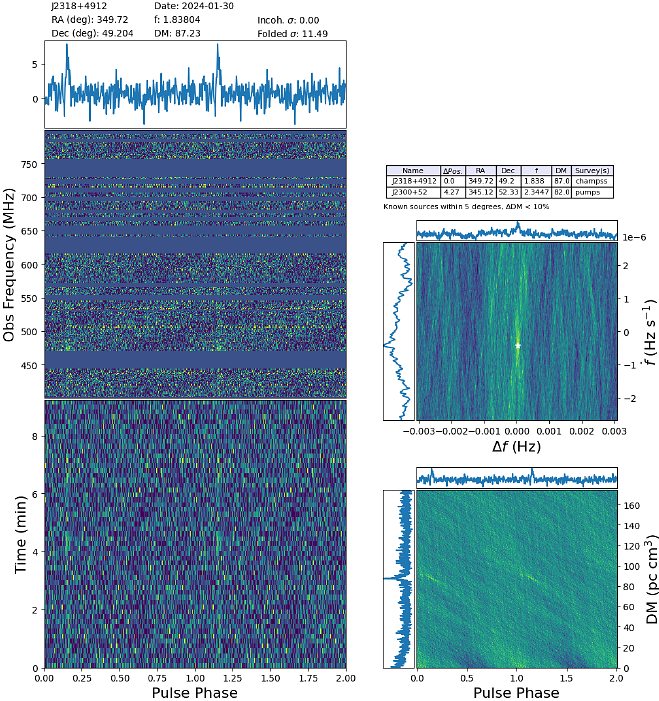CHIME All-sky Multiday Pulsar Stacking Search (CHAMPSS): System Overview and First Discoveries

CHIME All-sky Multiday Pulsar Stacking Search (CHAMPSS): System Overview and First Discoveries
Christopher Andrade, Charanjot Brar, Alyssa Cassity, Kathryn Crowter, Davor Cubranic, Abigail K. Denney, Fengqiu Adam Dong, Emmanuel Fonseca, Ajay Kumar, Lars Künkel, Magnus L'Argent, Dustin Lang, Robert A. Main, Kiyoshi W. Masui, Sujay Mate, Juan Mena-Parra, Bradley W. Meyers, Cherry Ng, Aaron B. Pearlman, Ue-Li Pen, Scott M. Ransom, Alexander P. Roman, Kendrick Smith, Reynier Squillace, Ingrid Stairs, Chia Min Tan, Laurent Tarabout, Xia Wenke, Tarik J. Zegmott
AbstractWe describe the CHIME All-sky Multiday Pulsar Stacking Search (CHAMPSS) project. This novel radio pulsar survey revisits the full Northern Sky daily, offering unprecedented opportunity to detect highly intermittent pulsars, as well as faint sources via long-term data stacking. CHAMPSS uses the CHIME/FRB datastream, which consists of 1024 stationary beams streaming intensity data at $0.983$\,ms resolution, 16384 frequency channels across 400--800\,MHz, continuously being searched for single, dispersed bursts/pulses. In CHAMPSS, data from adjacent east-west beams are combined to form a grid of tracking beams, allowing longer exposures at fixed positions. These tracking beams are dedispersed to many trial dispersion measures (DM) to a maximum DM beyond the Milky Way's expected contribution, and Fourier transformed in time to form power spectra. Repeated observations are searched daily to find intermittent sources, and power spectra of the same sky positions are incoherently stacked, increasing sensitivity to faint persistent sources. The $0.983$\,ms time resolution limits our sensitivity to millisecond pulsars; we have full sensitivity to pulsars with $P > 60\,$ms, with sensitivity gradually decreasing from $60$ ms to $2$\,ms as higher harmonics are beyond the Nyquist limit. In a commissioning survey, data covering $\sim 1/16$ of the CHIME sky was processed and searched in quasi-realtime over two months, leading to the discovery of eleven new pulsars, each with $S_{600} > 0.1$\,mJy. When operating at scale, CHAMPSS will stack $>$1\,year of data along each sightline, reaching a sensitivity of $\lesssim 30\, \mu$Jy for all sightlines above a declination of $10^{\circ}$, and off of the Galactic plane.